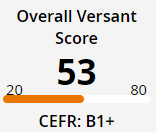

今回は、「say」と「tell」の違いについて4つのステップで説明いたします。

はじめに音声について説明させてください。
これからご紹介する例文のうち、左側に以下のマークがついているものがあります。

PCの場合はマウスのカーソルを、スマートフォンやタブレットの場合は指を、このマークがある英文に合わせてクリックまたはタップするとマークの色が以下のように変わり、音声が再生されます。

何度も繰り返し聞いて、表現を耳から覚えて自分のものにしましょう!
ステップ1:範囲が広い「say」と限定的な「tell」

「say」も「tell」もどちらも「言う」、「話す」という意味があります。
「say」はどのような状況でも「言う」、「話す」という意味で使えます。「tell」は「指示するために言う」、「伝えるために言う」というニュアンスがあるため「say」に比べ、使える状況は限定されます。
「say」と「tell」の両方とも使えるケース
「指示するために言う」、「伝えるために言う」という意味の「言う」は「say」と「tell」の両方とも使えます。
指示するために言う
“Come in,” I said.「入りなさい」と私は言った。
“Come in,” I told her.「入りなさい」と私は彼女に言った。
伝えるために言う
They said that they probably wouldn’t come.彼らは多分来ないと言った。
They told me that they probably wouldn’t come.彼らは多分来ないと言った。
「tell」が使えないケース
「tell」は「指示するために言う」、「伝えるために言う」というニュアンスがあるため、以下のような場合は「tell」は使えず「say」を使います。
あいさつ
She said, “How are you?”彼女は「ご機嫌いかがですか」と言った。
使えないケース
(✕)She told me, “How are you?”
質問文
Are you OK? ” I said.「大丈夫ですか」と私は言った。
使えないケース
(✕)“Are you OK? ” I told him.

ステップ2:話し相手を含める「tell」と話し相手を含めなくても成り立つ「say」
話し相手を含める「tell」
「tell」は通常、そのあとに話し相手の情報が含まれます。(「me」、「you」など)
John’s just told me that he’s getting married.
ジョンはちょうど私に彼が結婚したことを伝えた。
I told you it was easy.それは簡単だと私はあなたに言った。
話し相手を含めなくても成り立つ「say」
「say」では、話し相手を含めなくても文章が成り立ちます。
I said that it might rain.私は雨が降るかもしれないと言った。
She says everything is going smoothly.彼女はすべて順調に進んでいると言う。
「say」で話し相手を含めるためには「to」を使う
「say」で話し相手を含めるためには「to」を使います。
What did you say to her?彼女になんて言ったの?
I said to myself , ‘That can’t be right!’私は「それが正しいわけがない」と自分自身に言った。
ステップで3:「〜するように言う」の「tell+人 to〜」

「tell+人 to〜」で「〜するように言う、命じる、指示する」という意味になります。「say」ではこのような使い方はできません。
The doctor told me to take vitamins regularly.医者は私にビタミンを定期的に摂取するように指示した。
He told me to think twice before speaking.彼は私に話す前によく考えるように言った。※「think twice」=よく考える
ステップ4:例外的に話し相手を含めない「tell」
特定の慣用表現では、「tell」に話し相手を含めない場合もあります。
tell the truth:真実を話す、本当のことを言う
You should always tell the truth.いつも真実を話すべきだ。
tell a lie:うそをつく
It is wrong to tell a lie.うそをつくのは悪いことだ。

「say」と「tell」の違いについて理解が深まりましたでしょうか。
最後までご覧いただき、ありがとうございました。
あわせて読みたい













コメント